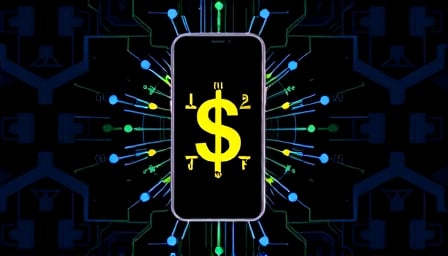Tether USDt: A Stable Anchor Amid a Volatile Crypto Cycle
Tether (USDT) remains the most liquid and widely traded stablecoin in the cryptocurrency market, with a market capitalization exceeding $171 billion. Its price on 16 September 2025 hovered at $1.00045, narrowly above the 52‑week low of $0.996926 and only 0.2 % shy of the 52‑week high of $1.00299. In a market that has seen Bitcoin surge to an unprecedented $117,900 after a Federal Reserve rate cut, and Ethereum recovering above $4,600, USDT’s stability is both a buffer for traders and a reminder of the systemic risks that underlie the broader ecosystem.
1. The Role of USDT in an Uncertain Market
The recent rallies of Bitcoin and Ethereum, as reported by CoinGape and CryptoPanic, illustrate a market that is increasingly seeking high‑yield exposure. Yet the very same market is also experiencing sharp volatility, evidenced by Shiba Inu’s reported $4 million hack and the ongoing scrutiny of layer‑2 networks. In such an environment, USDT’s promise of fiat‑backed value becomes a critical risk‑management tool.
Liquidity Provider: USDT’s dominant position on exchanges like Binance and Coinbase ensures that traders can swiftly move in and out of positions without significant slippage. The Binance announcement of a $1 million USDT prize pool for its Futures Masters Arena underscores the currency’s centrality to high‑volume trading.
Safe Haven: During the sharp swing of Bitcoin from $116,500 to $117,900, many traders parked in USDT to preserve capital. The stablecoin’s price remaining close to parity with the US dollar during these swings demonstrates its resilience.
2. Institutional Adoption and the Rise of Digital Payments
The launch of MoneyGram’s stablecoin‑powered payments app in Colombia highlights a broader trend: stablecoins are becoming the de facto medium for cross‑border remittances and local savings. By leveraging the Stellar network and Crossmint’s self‑custody, MoneyGram offers users a way to shield themselves from the Colombian peso’s depreciation. This adoption signals that USDT, along with other fiat‑backed tokens, is gradually permeating everyday financial transactions, thereby expanding its user base beyond speculative traders.
3. Regulatory and Trust Concerns
Despite its liquidity, USDT has long faced criticism over transparency. While the provided data does not detail the latest audit reports, the ongoing scrutiny of other stablecoins—such as the $4 million hack on Shibarium—reinforces the need for stringent oversight. Investors must remain vigilant: any sudden de‑peg of USDT could cascade through the markets, affecting not just Tether holders but also the larger ecosystem that relies on the currency for settlement and hedging.
4. Market Dynamics and the Path Forward
Price Stability: With the 52‑week range remaining tight, USDT continues to exhibit the “stable” nature that its name implies. Even as Bitcoin and Ethereum test new resistance levels—$117,250 for BTC and $4,680 for ETH—the stablecoin’s price remains uncorrelated to these highs and lows.
Liquidity Pressure: The sheer volume of trades involving USDT means that any liquidity crunch could quickly translate into price volatility. The recent announcement of a $1 million USDT prize pool for Binance’s Futures Masters Arena may intensify this pressure, as participants seek to liquidate positions before the event’s expiry.
Regulatory Impact: Global regulators are increasingly focusing on stablecoins as potential systemic risks. Any regulatory tightening could impact USDT’s market cap and liquidity, especially if exchanges are forced to delist or re‑price the token.
5. Conclusion
Tether USDt stands at the crossroads of speculation and stability. While its price remains impressively tethered to the US dollar, the surrounding market’s volatility and regulatory scrutiny demand that traders and institutional users treat it not as a riskless hedge, but as a tool that requires ongoing assessment. The recent surge of Bitcoin and Ethereum, coupled with the growing adoption of stablecoins for everyday payments, suggests that USDT will continue to play a pivotal role—provided it can maintain transparency and withstand the inevitable regulatory challenges that loom on the horizon.
